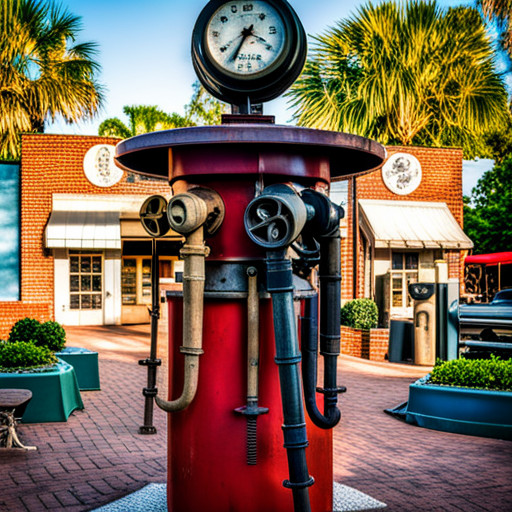Marine Corps Negligence and Health Impacts: The Camp Lejeune Water Contamination Saga
Unraveling like a grim tapestry, the Camp Lejeune water contamination saga documents the Marine Corps' negligence and its profound health impacts.

This article navigates the murky waters of this crisis, probing its inception, identifying contamination sources, and delineating related health implications.
It further explores the labyrinth of lawsuits and claims, the Camp Lejeune Justice Act's progress, and the Marine Corps' role, while also providing a platform for survivor stories.
Key Takeaways
The Camp Lejeune Justice Act allows individuals to file water contamination cancer lawsuits, nullifying the statute of limitations.
Thousands of Marines may have died as a result of water contamination at Camp Lejeune, and recent news articles highlight survivors' experiences and potential cancer risks for children born there.
The contamination is thought to have come from sources such as a local dry cleaner, leaky fuel storage facilities, unlined waste disposal facilities, and PFAS firefighting foam.
Lawsuits and wrongful death claims are being filed by surviving spouses and others, with bellwether trials potentially establishing payout levels for plaintiffs.
The Inception of the Camp Lejeune Water Contamination

The inception of the Camp Lejeune water contamination saga is believed to have started around August 1953. The contamination has been attributed to various sources, including a local dry cleaner, a leaky fuel storage facility, unlined waste disposal facilities, and PFAS firefighting foam.
The implications for public health have been profound, with several cases of serious diseases linked to the contamination. Military families, a demographic residing in the camp during the contamination period, have been particularly affected. Many families have reported incidences of severe health complications, believed to be directly linked to the contaminated water.
The situation has led to an increased scrutiny of the Marine Corps' role in the contamination saga and their subsequent handling of the situation. This scrutiny has raised questions about their accountability and the adequacy of their response.
Identifying the Contamination Sources

Potential sources of the detrimental pollution include a local dry cleaner, leaky fuel storage facility, unlined waste disposal units, and PFAS firefighting foam. These entities have significantly contributed to the contamination at Camp Lejeune, leading to serious long-term health effects.
Investigation into the causes of contamination has revealed the following:
- Industrial spills and improperly managed waste disposal sites contributed significantly to the pollution.
- Toxins such as trichloroethylene, tetrachloroethylene, vinyl chloride, and benzene were found in water treatment plants, indicating severe contamination.
- The contamination can be traced back to as early as August 1953, suggesting long-term exposure for residents.
The repercussions of this negligence are far-reaching, affecting not only the health of the residents but also posing serious environmental concerns.
Health Implications of the Contamination

Long-term exposure to toxins such as trichloroethylene, tetrachloroethylene, vinyl chloride, and benzene, as found in the local environment, has led to significantly increased cancer risks among residents, emphasizing the urgent need for remedial actions.
Analytical studies have indicated a direct correlation between these toxins and the health risks, including a myriad of cancers, observed among those exposed for extended periods. This evidence underscores the long-term effects of such exposure, with many individuals presenting symptoms years after initial contact.
The situation evidences a public health crisis, necessitating immediate investigation and intervention.
Furthermore, the magnitude of the health risks implicated necessitates a comprehensive approach towards addressing the issue, inclusive of stringent regulation enforcement, remediation efforts, and compensation for affected parties.
The Legal Aspects: Lawsuits and Claims

Numerous lawsuits and wrongful death claims have been filed by surviving spouses and other affected individuals, with bellwether trials potentially establishing payout levels for plaintiffs. These lawsuits are centered upon the negligence of the Marine Corps in addressing the water contamination issue at Camp Lejeune, which has allegedly resulted in significant health impacts.
The Camp Lejeune Justice Act has nullified the statute of limitations allowing for these lawsuits. It has set certain criteria for compensation eligibility which include:
- Residency at Camp Lejeune from 1953 to 1987 for at least 30 days
- Evidence of suffering from diseases linked to the water contamination
Despite this, delays in the justice act are compounding the problems faced by Marine veterans and their families, making the pursuit of justice a challenging endeavor.
Progress and Updates on the Camp Lejeune Justice Act

Recent developments on the Justice Act demonstrate a concerted effort towards expedited resolution of ongoing lawsuits, with a committee of seven attorneys appointed specifically for this purpose. This initiative intends to streamline the compensation process for affected individuals, a critical element in the aftermath of the Camp Lejeune water contamination saga.
However, the path to resolution is not without significant hurdles. The Marine Corps faces significant challenges in addressing the contamination, with allegations of negligence exacerbating the situation. The complexity of the contamination case, coupled with the high number of claimants, presents a logistical obstacle. Moreover, the intricacies associated with defining a fair compensation framework are yet another challenge.
Despite these challenges, the dedicated committee's work is a hopeful step towards justice for those adversely affected by the contamination.
The Role of Marine Corps in the Saga

Transitioning from the legislative developments surrounding the Camp Lejeune Justice Act, it becomes imperative to scrutinize the role of the Marine Corps in this enduring saga. The Marine Corps' actions, or lack thereof, have been central to the unfolding of this tragic narrative.
Marine Corps accountability is at the heart of this issue, as their alleged negligence has been linked to the water contamination and subsequent health crises.
Numerous victims, both military personnel and civilians, have been left to grapple with life-threatening diseases, necessitating compensation.
The Marine Corps' role in the provision of this compensation is critical, albeit contentious.
An analytical examination of these aspects is instrumental in understanding the depth of the Marine Corps' involvement and the potential avenues for redress for the victims.
Personal Experiences: Survivor Stories

Personal accounts from survivors provide a poignant perspective on the distressing ramifications of the alleged environmental mismanagement. These personal testimonies illustrate the impact of the water contamination at Camp Lejeune, highlighting the tangible and intangible costs.
The long-term effects of the contamination have manifested in numerous health implications, ranging from cancers to neurological disorders. Survivor stories reveal a pattern of late-stage diagnoses, indicating a possible correlation with the protracted exposure to contaminated water.
Furthermore, the psychological burden, characterized by anxiety and distress, adds another layer to the debilitating consequences. The survivor narratives thus underscore the need for rigorous investigation and comprehensive research to fully understand the scope and depth of this environmental catastrophe.
Seeking Justice: No-Cost Claim Reviews

Legal recourse is available to affected parties through no-cost claim reviews, offering a pathway to justice and compensation. These reviews serve to evaluate the compensation eligibility for affected families and underscore the importance of legal representation for victims.
In the wake of the Camp Lejeune water contamination saga, the provision of claim reviews at no cost is a significant development that facilitates access to justice for victims.
* The no-cost claim reviews are particularly essential in determining the eligibility for compensation for affected families.
* Legal representation is pivotal in seeking justice for victims, ensuring that their rights are protected.
* The claim reviews also serve as a critical tool for gathering evidence and understanding the extent of the negligence, thereby fostering a sense of justice among victims.
Frequently Asked Questions
What Specific Steps Is the Marine Corps Taking to Prevent Such Water Contamination Incidents in the Future?
In response to past water contamination incidents, the Marine Corps has implemented preventive legislation and strict contamination accountability measures. These include stringent water testing protocols and heightened scrutiny of potential contamination sources.
How Is the Marine Corps Supporting the Victims and Their Families Who Are Currently Dealing With the Health Implications of the Contamination?
Victim compensation is facilitated through legal recourse, notably the Camp Lejeune Justice Act. This legislation allows affected individuals to file lawsuits, potentially expediting the process to provide relief for health-related implications of the contamination.
Are There Any Health Monitoring or Support Programs Initiated for Those Who Were Exposed to the Contaminated Water at Camp Lejeune?
In response to the Camp Lejeune water contamination, certain healthcare reforms have been initiated. However, the primary focus appears to be on contamination lawsuits, seeking justice for the afflicted rather than systematic health monitoring or support.
What Measures Are Being Taken to Clean up and Rehabilitate the Contaminated Site at Camp Lejeune?
Cleanup technologies are actively utilized at Camp Lejeune, addressing the severe contamination. Rehabilitation challenges persist due to the magnitude of pollution and the complexity of removing hazardous materials from both soil and water sources.
Are There Any Other Military Bases That Have Reported Similar Instances of Water Contamination? if So, How Are They Being Handled?
Instances of water contamination have been reported at other military bases, prompting contamination lawsuits. These cases are managed based on the degree of contamination, base accountability, and the health impact on military personnel and their families.

This post has been generated by AI and was not reviewed by editors. This is Not legal advice. Please consult with an attorney.




